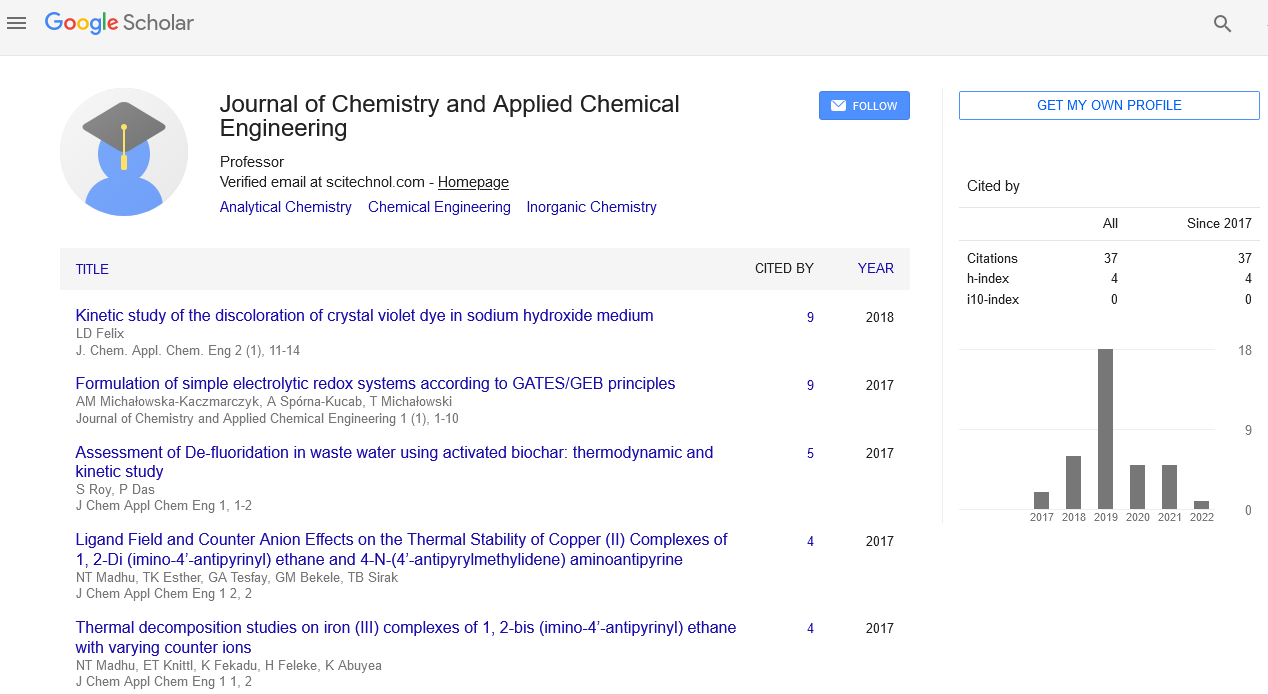A Gauge transformation theory for metamaterials
Woon Siong Gan
Acoustical Technologies Singapore Pte Ltd, Singapore
: J Chem Appl Chem Eng
Abstract
Veselago’s concept of negative permittivity and negative permeability also satisfy the dispersion relation of electromagnetic waves, gives rise to the form of artificial material known as metamaterials. This negativity property gives rise to negative lens able to capture the evanescent waves. However, the dispersion relation is unable to produce the phenomenon of cloaking which has to depend on coordinate’s transformation producing the bending of path of electromagnetic waves with no change in the form of the electromagnetic field equations. It was shown by Woon Siong Gan that both negative refraction and cloaking can be unified under the theory of coordinates transformation or gauge transformation. In fact negative refraction is a special case of cloaking when the transformation matrix equals -1. Subsequently it was shown that both negative refraction and cloaking can occur also in quantum metamaterial, an entirely different field from classical metamaterial proposed by Veselago. In quantum metamaterial the dispersion relation does not give rise to negative permittivity and negative permeability. The gauge transformation theory has to be used. There are many similarities between electromagnetic waves and acoustics waves. and so the electromagnetic metamaterial has also been extended to acoustic metamaterial. But sofar there has been no quantum acoustic metamaterial yet. So there is tremendous potential in exploring this new field. For the acoustic metamaterial, the permittivity and permeability of em waves are analogous to the bulk modulus and the mass density of acoustic waves respectively.
Biography
Woon Siong Gan obtained BSc in physics in 1965, DIC in acoustics & vibration science in May 1967 and PhD in acoustics in Feb 1969, all from the Imperial College London. His PhD thesis pioneered the statistical mechanics approach to ultrasound propagation in semiconductors. The usual approach is electron-phonon interaction of much body theory. It is also the first to introduce the concept of topological phase transition. The thesis title Transport Theory in Magnetoacoustics pioneered the introduction of transport theory to condensed matter physics. Transport theory is today the key foundation of theoretical design of materials. Hence his thesis also played a role in the founding of the field of condensed matter physics. He also recently discovered the singularity behavior of transport properties and resonance is singularity. In 2007 he pioneered the introduction of gauge invariance to acoustic field equations. Acoustic metamaterial is an outcome of gauge transformations. He is currently working on the application of gauge invariance to nonlinear acoustics such as multiple scattering, inverse scattering, and interactions. He has published the book Acoustical Imaging: Techniques & Applications by John Wiley & Sons in 2012, the book New Acoustics, based on Metamaterials by Springer in 2018 and several papers on acoustical imaging and gauge invariance in acoustics. He is a Fellow of the Institute of Acoustics, UK, a Fellow of the Engineering & Technology Institute,UK, a Fellow of the Institution of Engineers,Singapore, a Fellow of the Southern African Acoustics Institute, a Senior Member of IEEE, a Senior Member of the American Institute of Ultrasound in Medicine, and a Member of the Acoustical Society of America.
E-mail: wsgan5@gmail.com
 Spanish
Spanish  Chinese
Chinese  Russian
Russian  German
German  French
French  Japanese
Japanese  Portuguese
Portuguese  Hindi
Hindi 